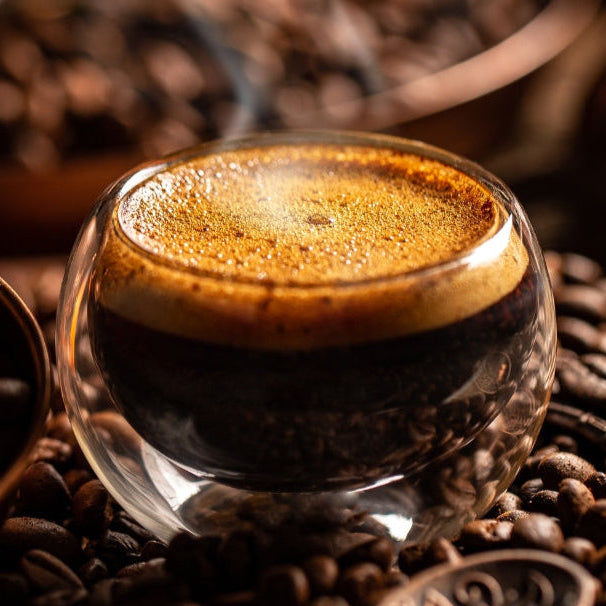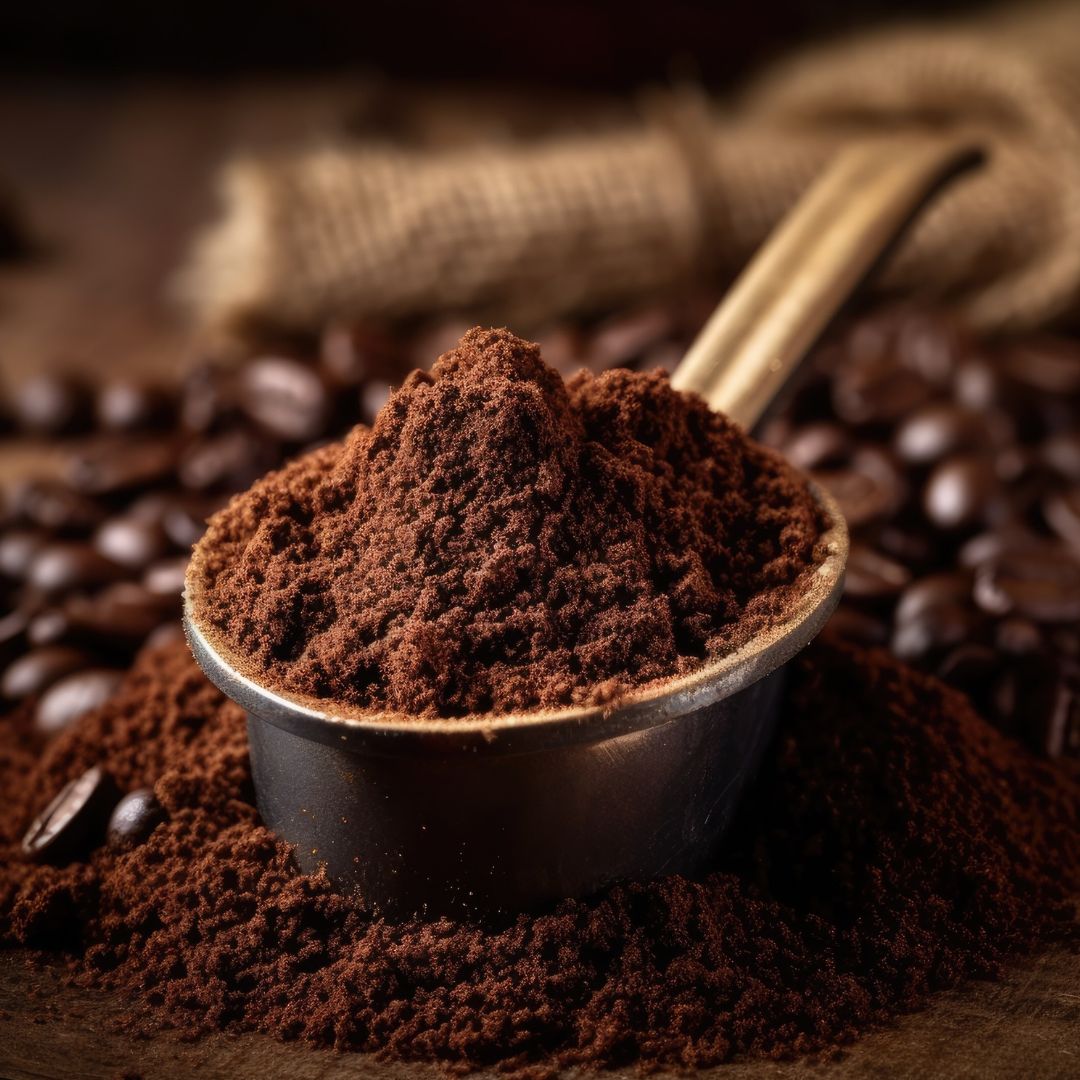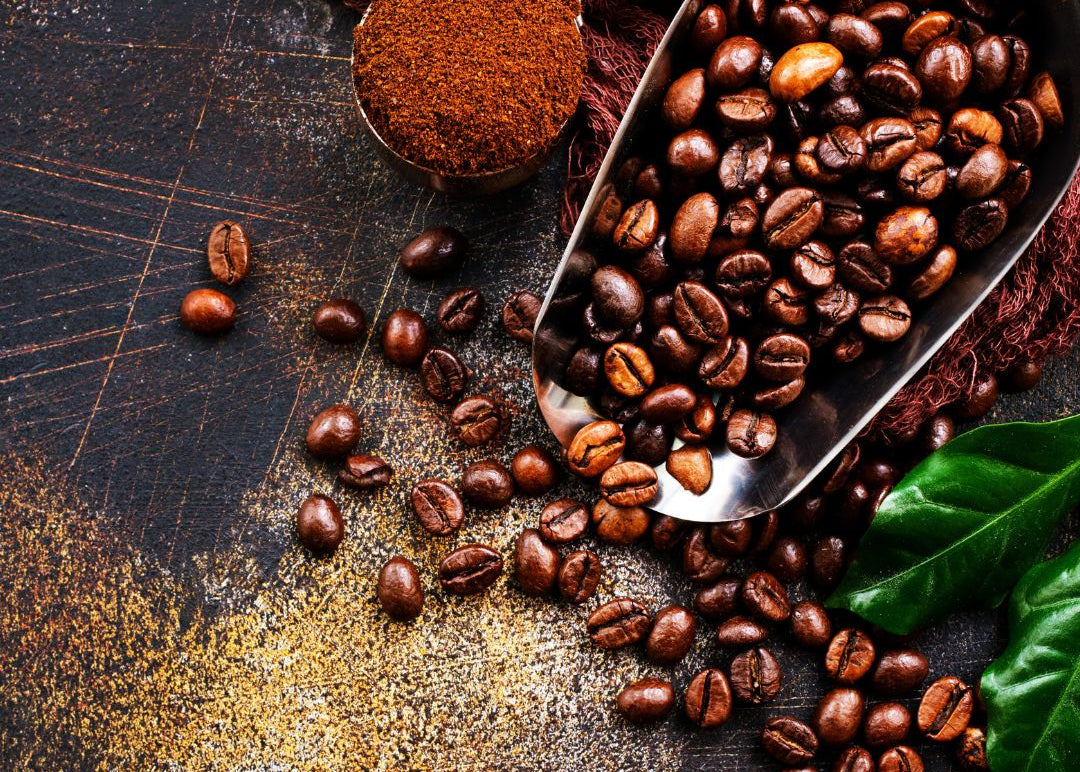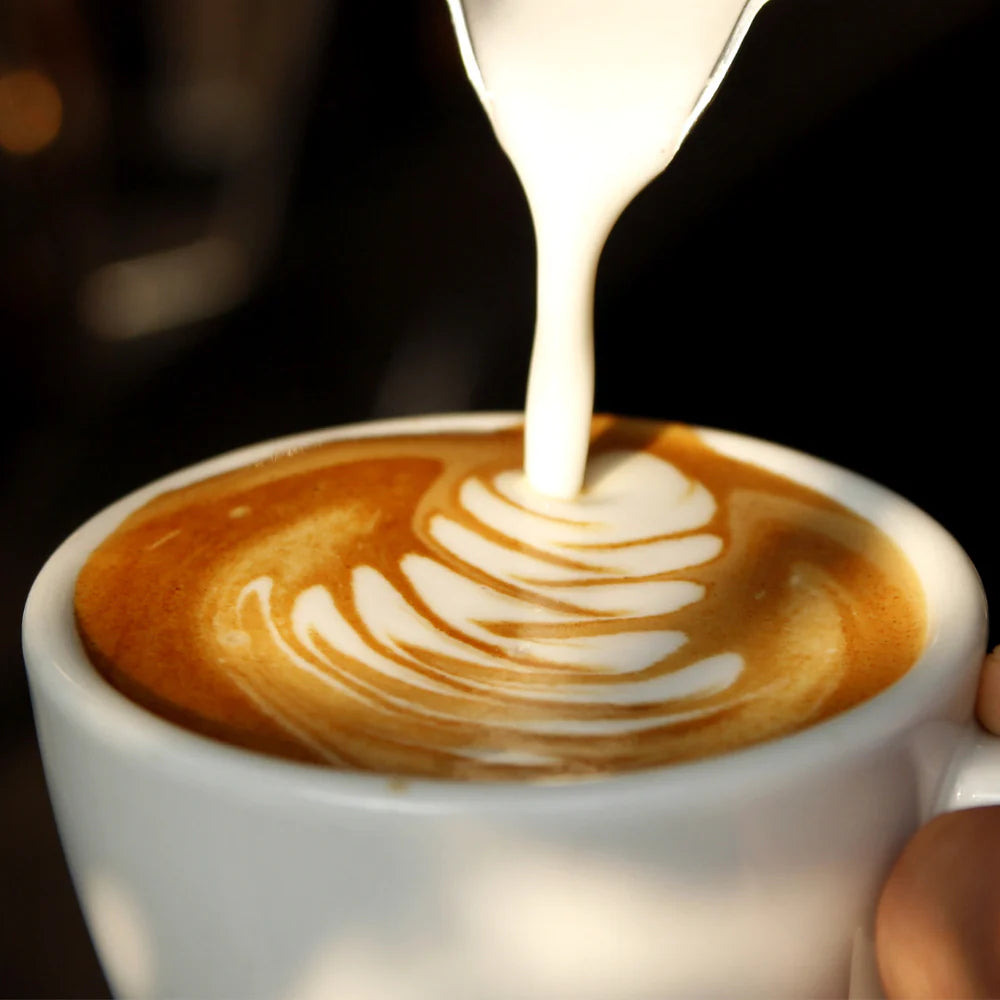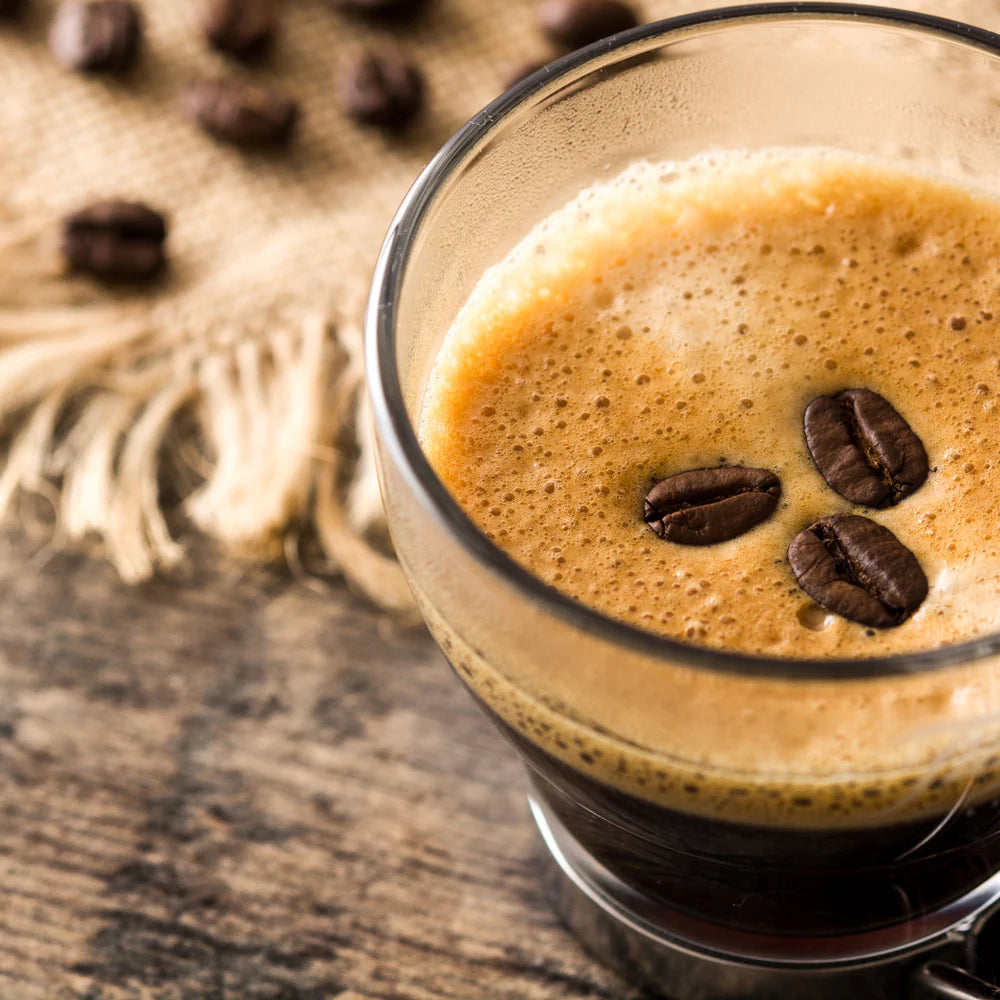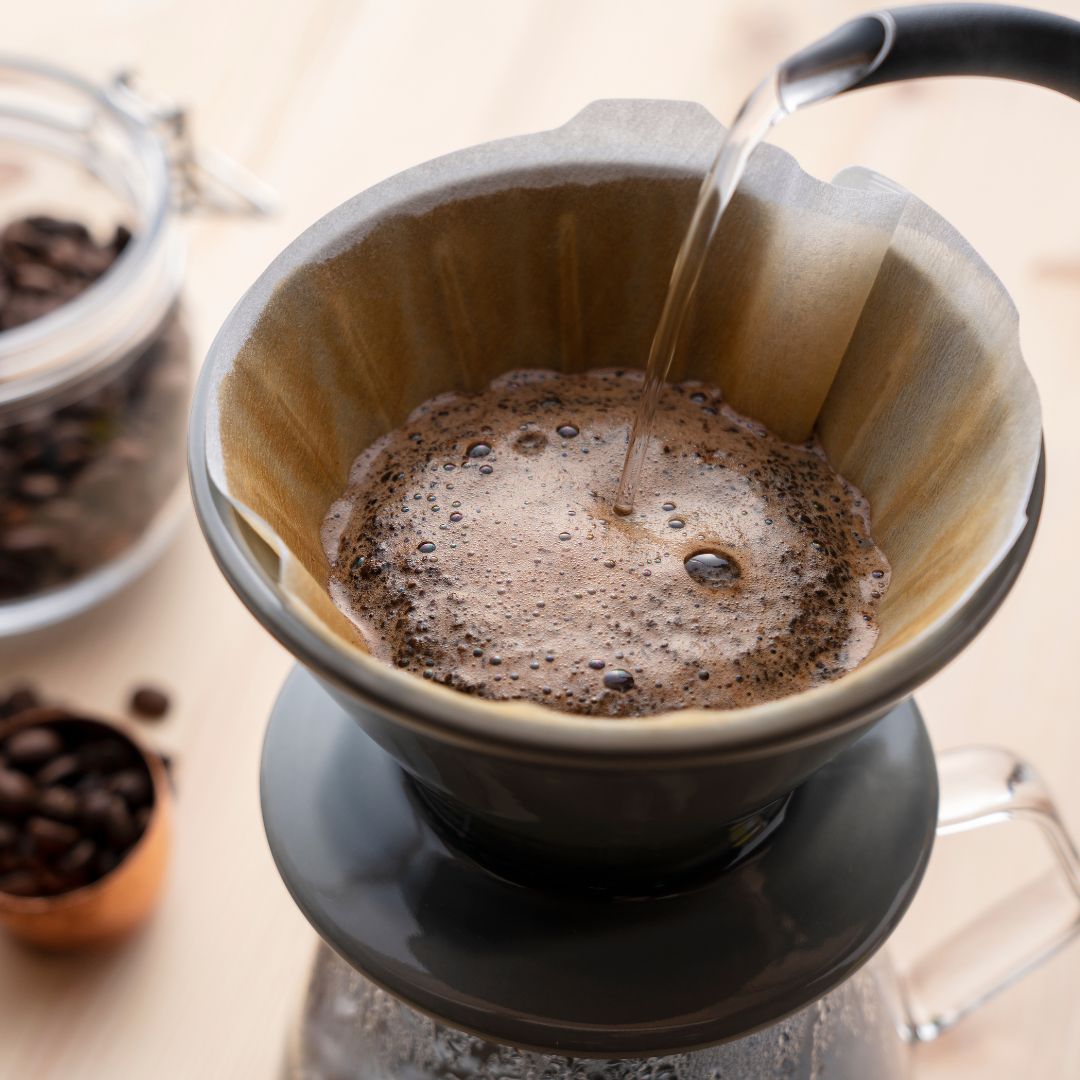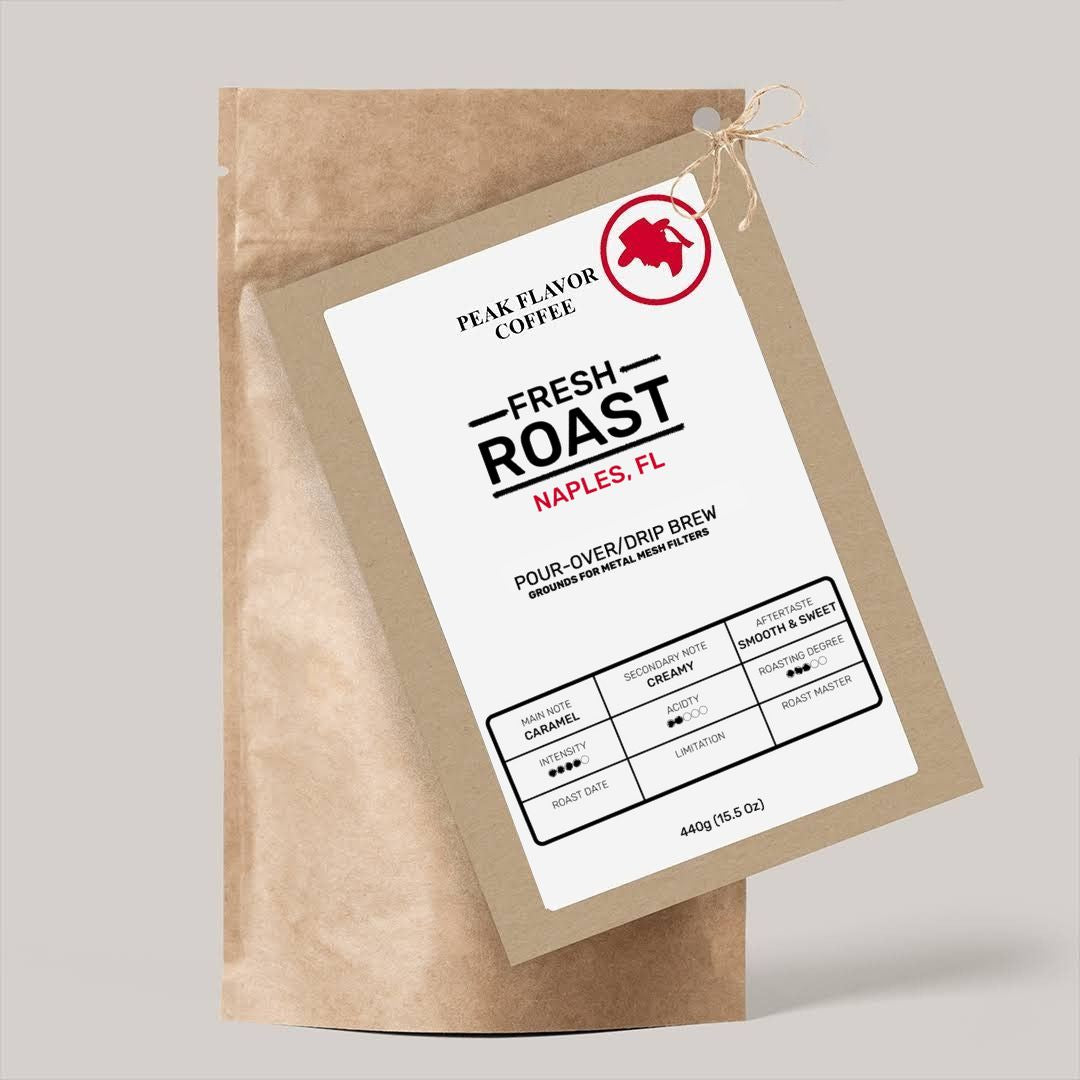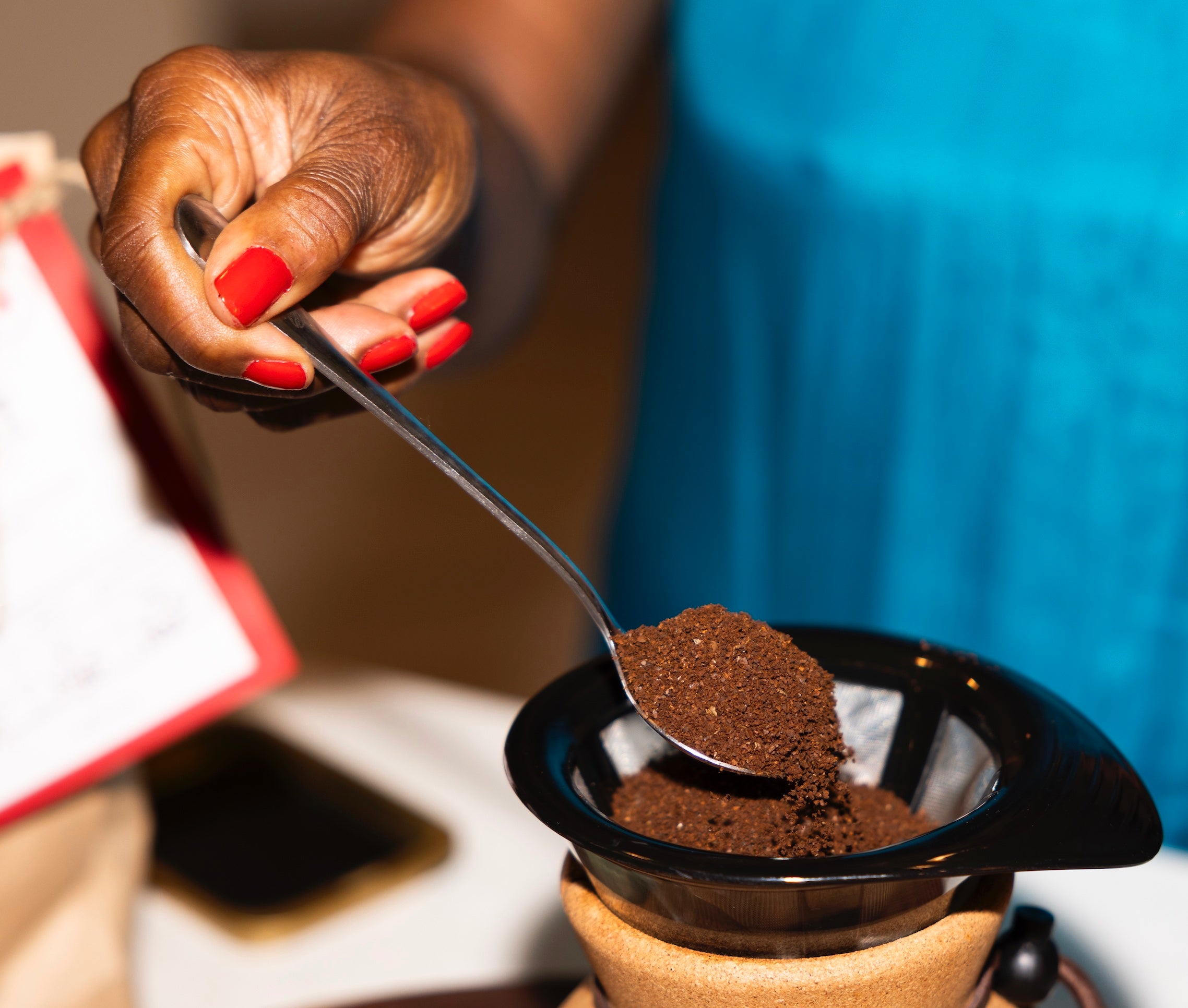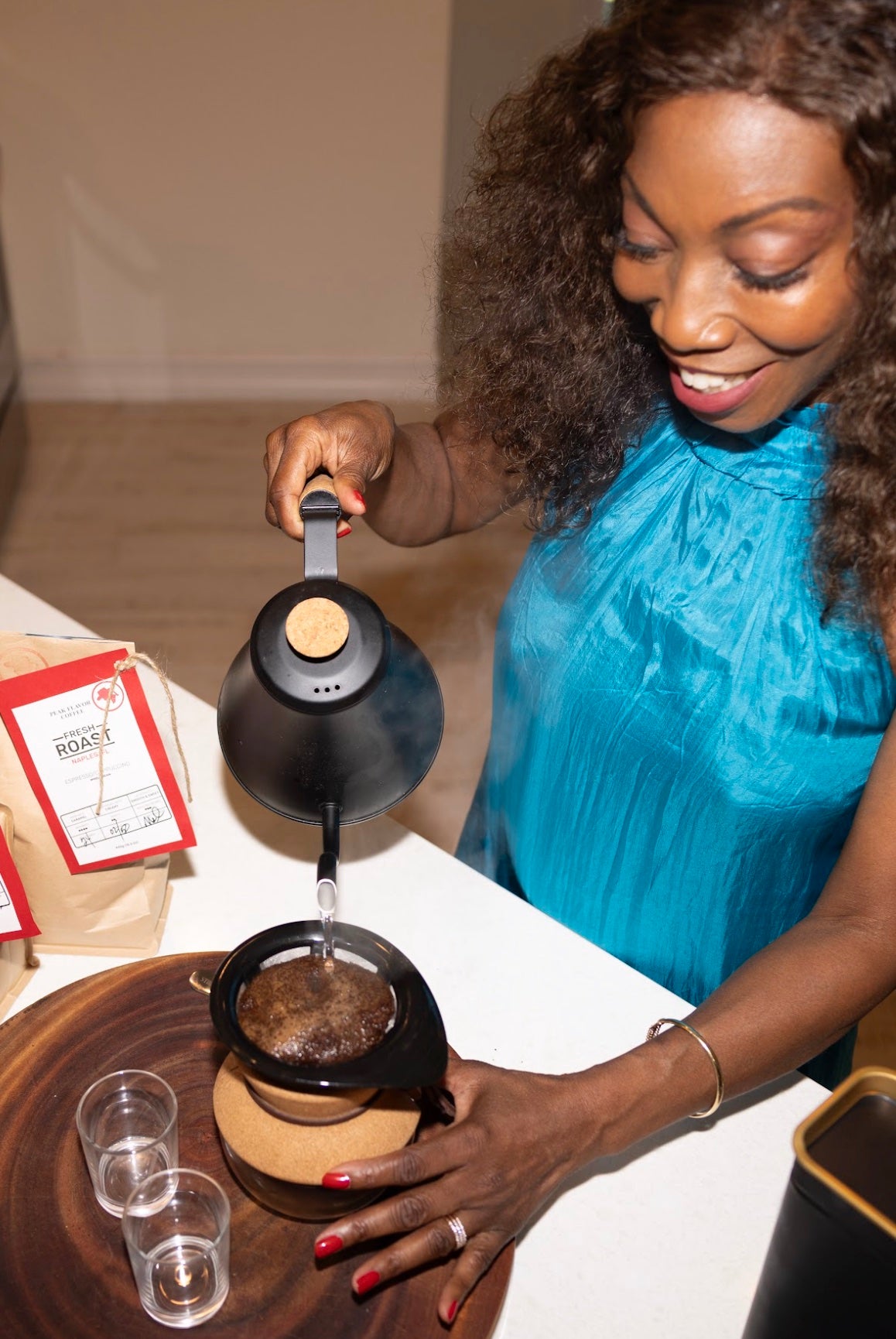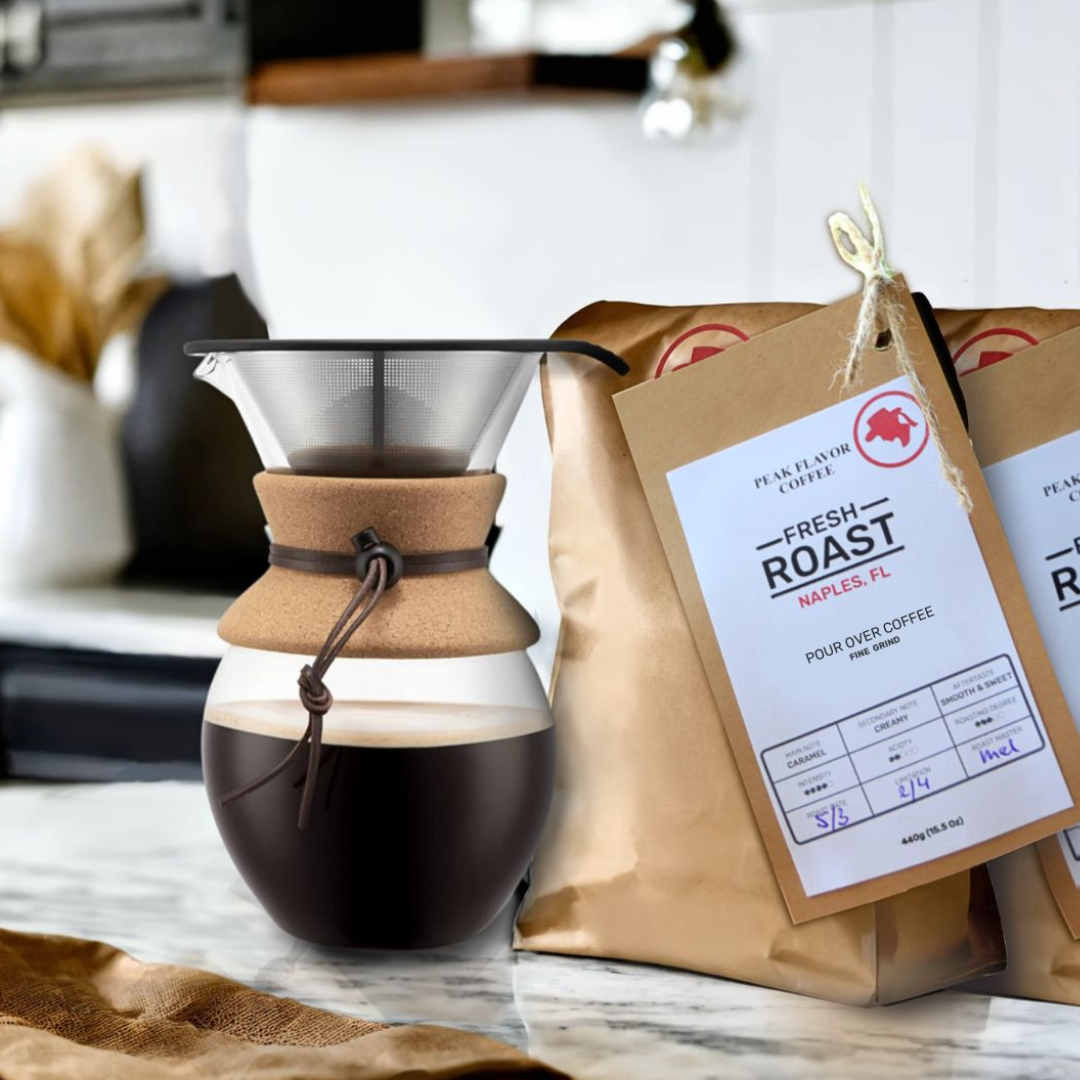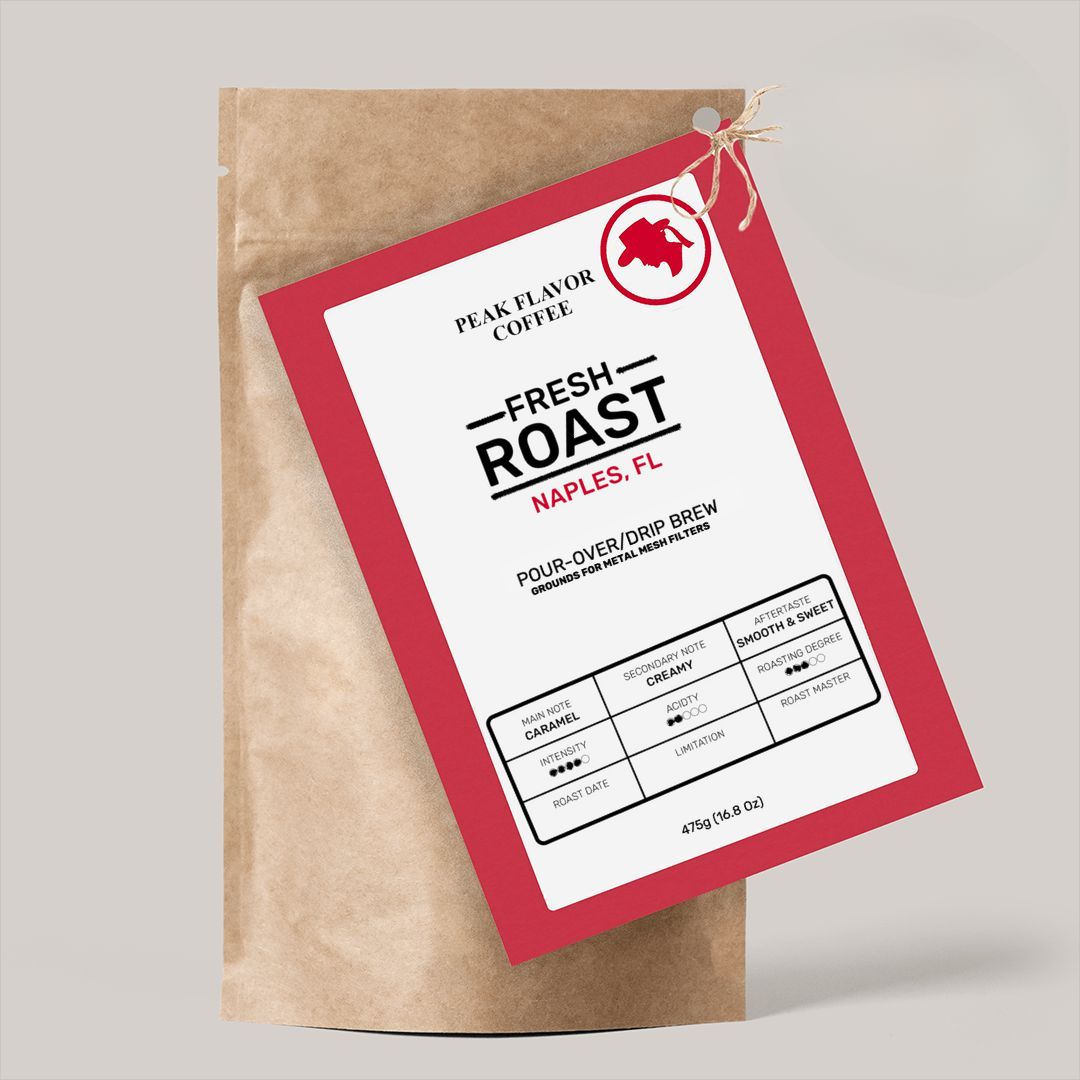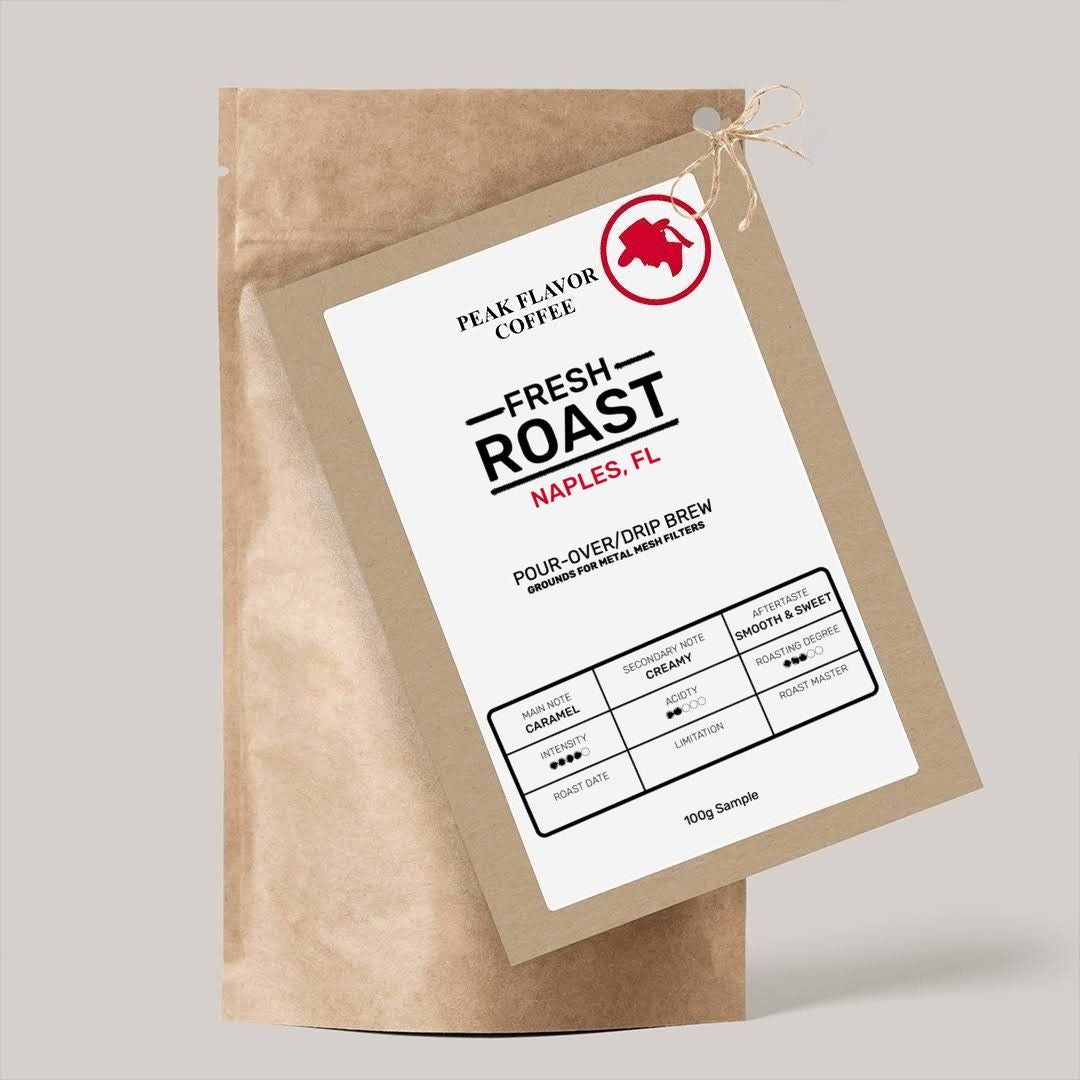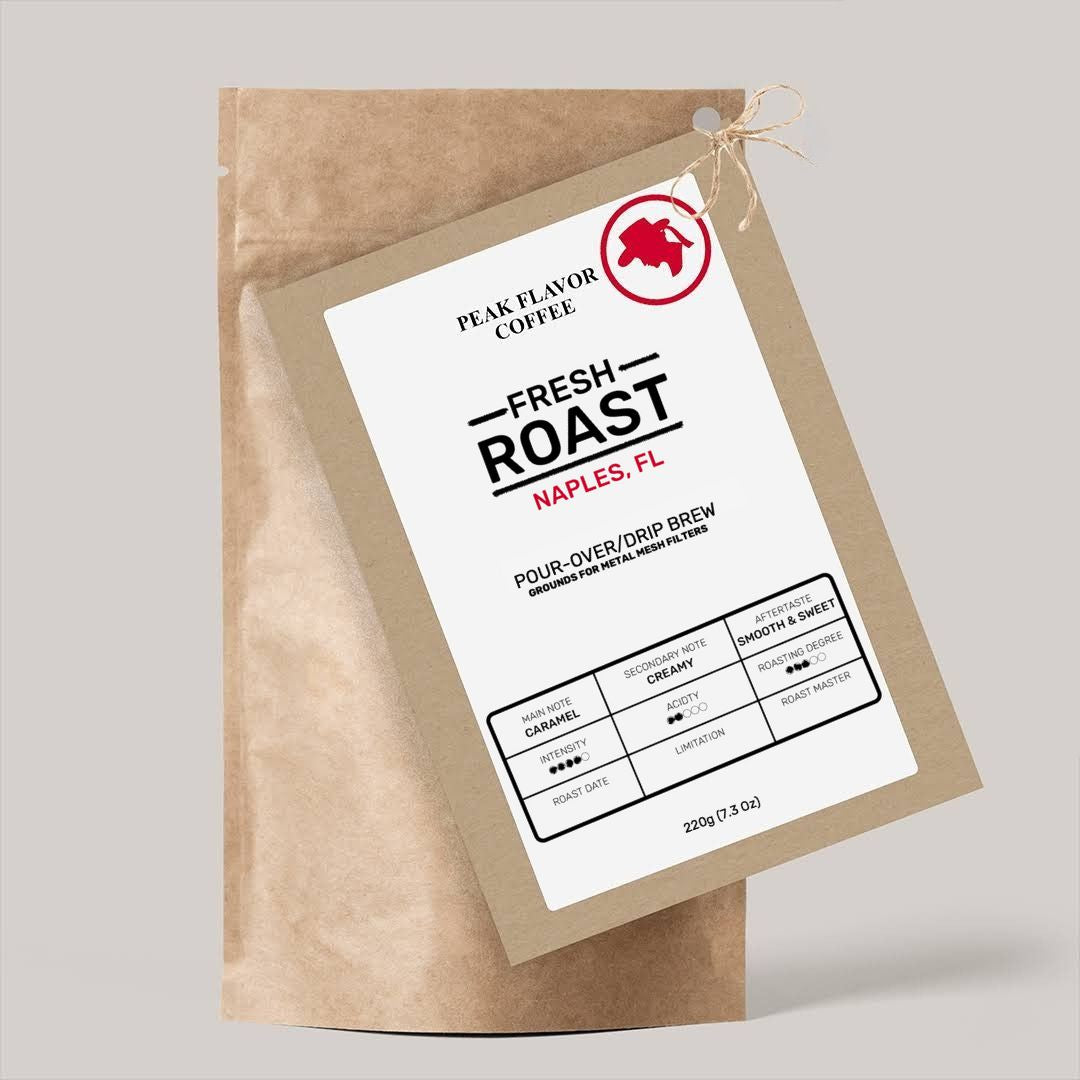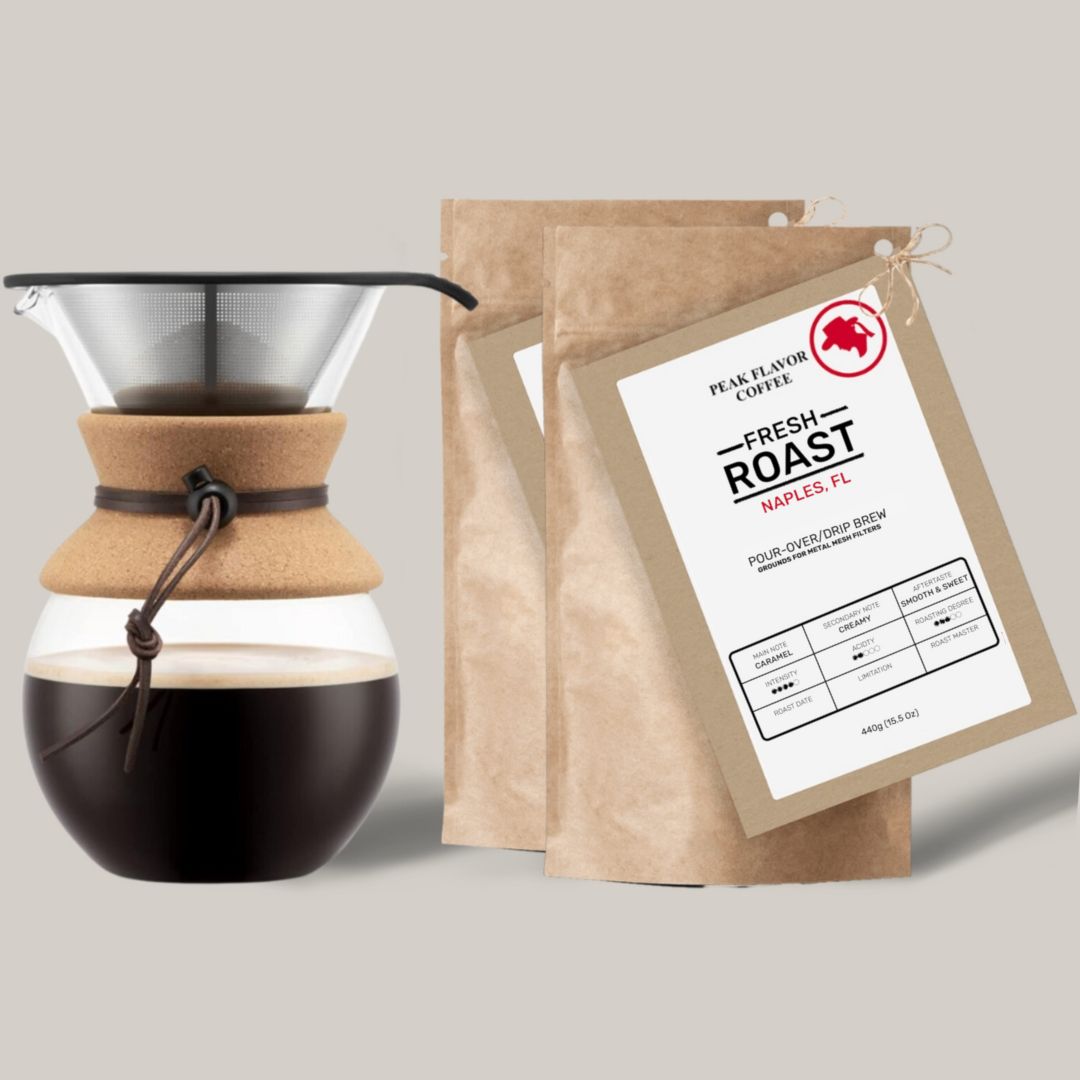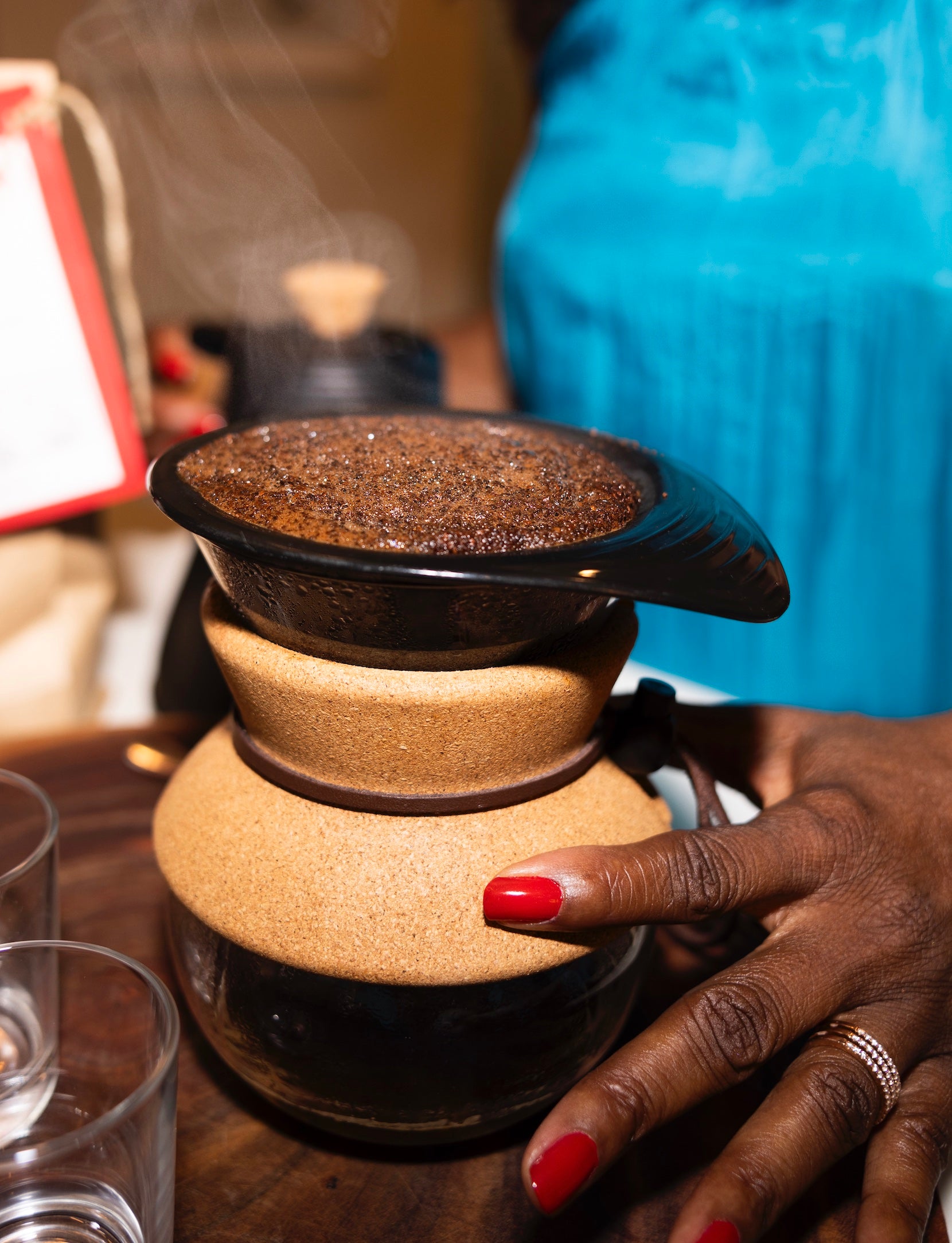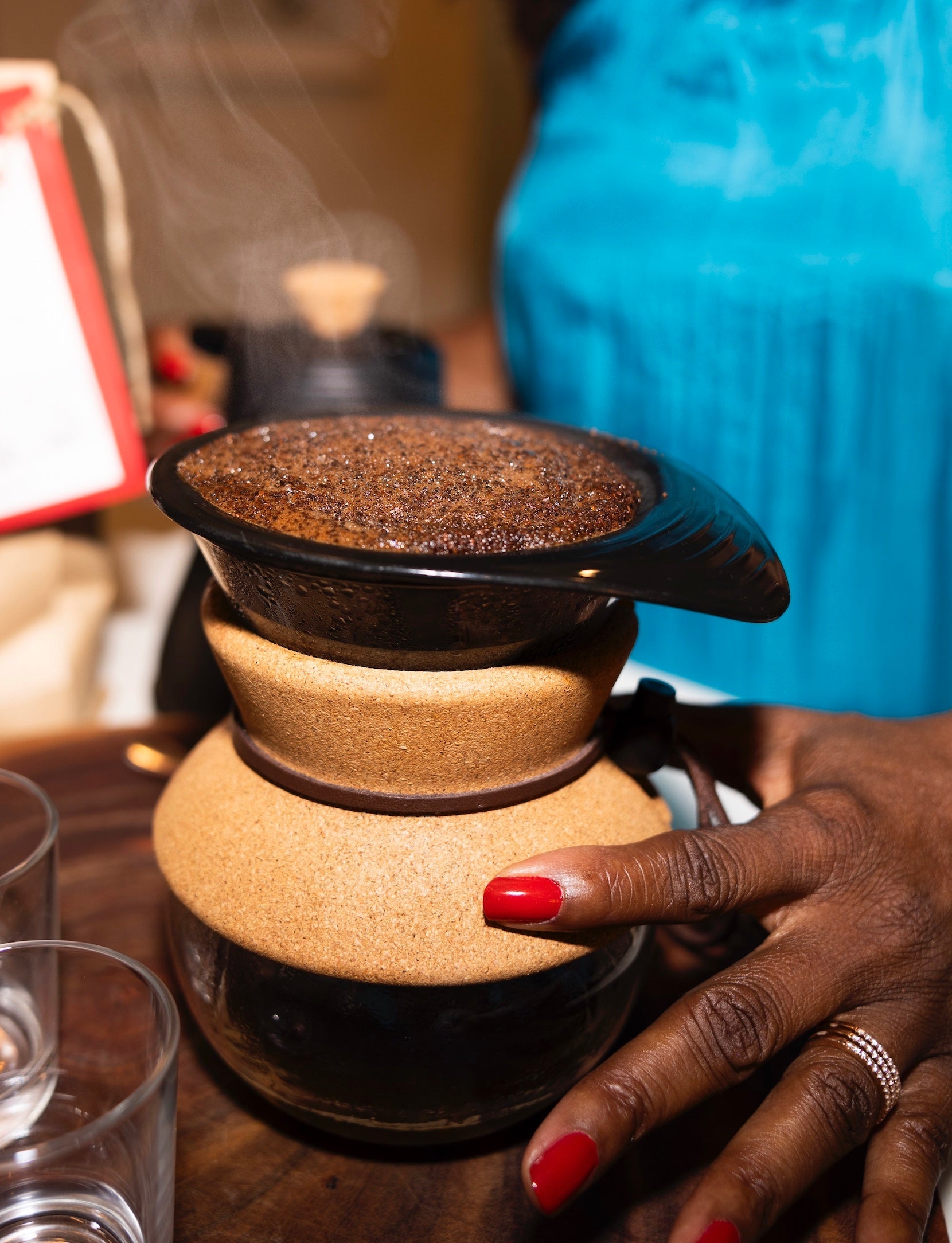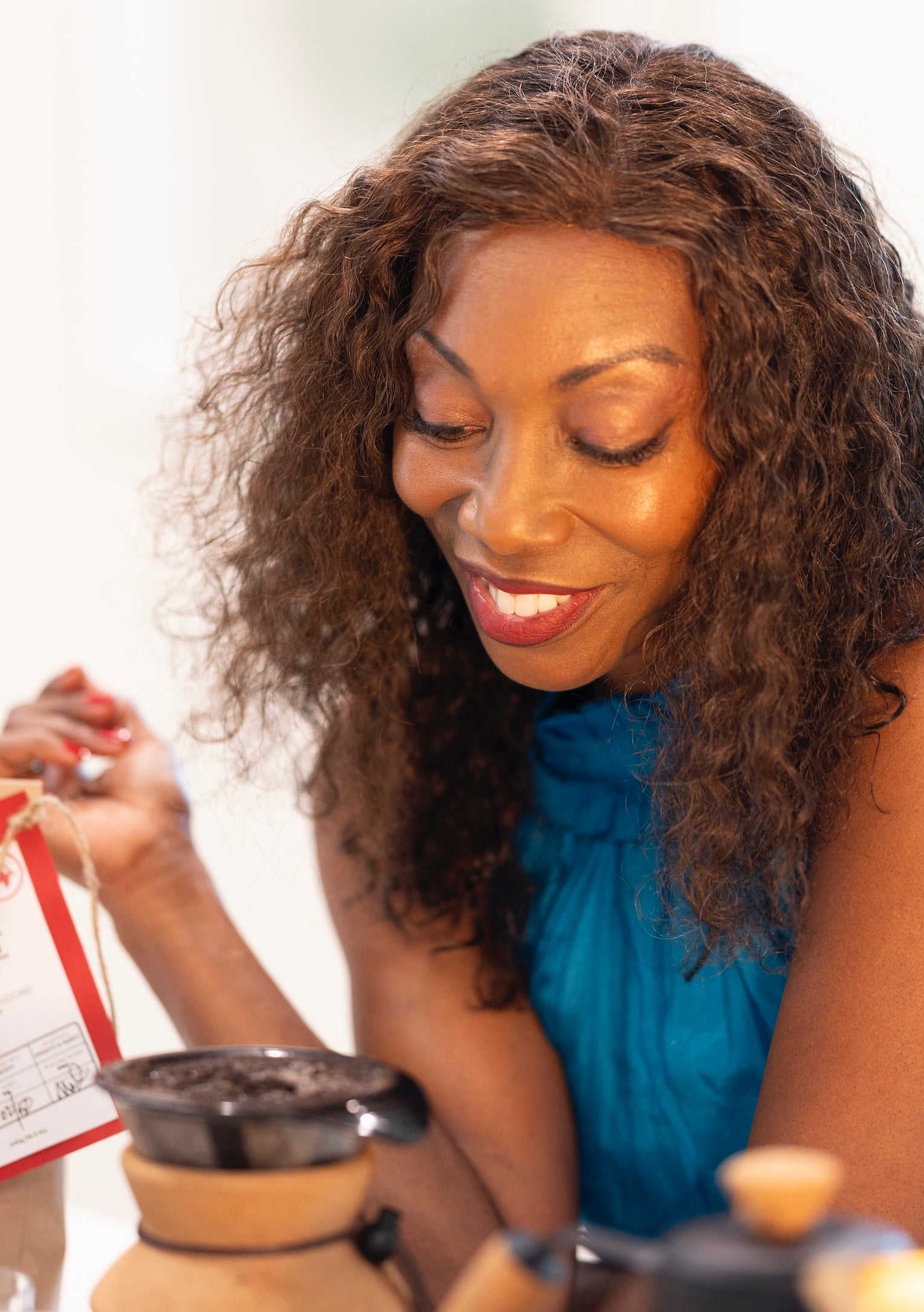The Freshness Factor: Why Freshly Roasted Beans are Essential
The Key To Great Pour Over Coffee
It’s Not Your Filter or Ratio
Hi, I’m Melicent—founder of Peak Flavor Coffee and ex-supermarket-coffee believer.
For longer than I care to admit, I was that person. You know, the one who spends more time lining up the folds in their pour over coffee filter than thinking about what’s actually in the filter.
I tried every trendy coffee-to-water ratio guide, upgraded to a sleek new kettle, and even adjusted my morning playlist for "better brewing energy." Still? My pour over tasted like regret with a hint of cardboard.
Then one day, in an act of desperation (and over-caffeinated courage), I asked the intimidating barista at my favorite local coffee spot how she made my $9 pour over taste like heaven. Her answer? “We roast in the back. I always use fresh roasted beans.”
Cue dramatic pause.
Fresh. Roasted. Beans.
Turns out, I had been sabotaging my pour over all along with stale supermarket coffee roasted months ago. Who knew that the "best before" date on the bag was coffee industry code for “tastes like old socks”? That day, I vowed to never drink dead beans again. And that’s how Peak Flavor Coffee—and my obsession with fresh roasted pour over perfection—was born.
The Real MVP of Pour Over: Fresh Roasted Coffee
Pour over coffee is precise. Delicate. Artful. But no matter how flawless your technique or Instagram-worthy your gear, it all means nothing if you’re starting with old beans. Fresh roasted coffee isn’t just a nice-to-have—it’s the must-have.
Here’s why: once coffee is roasted, it starts breaking down. Fast. The oils and volatile compounds that give coffee its complex aromas and flavor start oxidizing. Within a couple of weeks, most of that magic is gone. The result? A flat, lifeless brew that makes your pour over ritual feel like a waste of hot water.
When you use fresh roasted coffee beans—like the ones we roast-to-order at Peak Flavor Coffee—you unlock the real potential of your pour over. Suddenly, that citrus note? It pops. The body? Silky and rich. The aroma? Practically a spa treatment.
Science Says: Freshness Isn’t Optional
Let’s get nerdy for a second. Coffee scientists (yes, that’s a real job and yes, I’m still jealous) have shown that key flavor compounds like 2-furfurylthiol—which gives coffee that toasty, roasted scent—start degrading just 7–14 days after roasting (Yeager et al., 2022). That means if you’re drinking coffee that’s been on a shelf for 2 months, you’re basically sipping stale shadows of former greatness.
Why? It all comes down to oxidation. The moment coffee beans are roasted, they start releasing carbon dioxide (CO₂) and interacting with oxygen. This triggers the breakdown of aromatic oils and volatile compounds—the very stuff that gives coffee its rich, layered flavor (Baggenstoss et al., 2008; Sunarharum et al., 2014).
Think of it like leaving a peach on the counter for a week. It may still be a peach, but it’s not the one you want in your smoothie.
Studies have confirmed that aldehydes, esters, and sulfur-based volatiles—all flavor powerhouses—begin degrading within days. That’s why we roast in small batches and ship fast at Peak Flavor Coffee: to capture that fleeting window when your beans are at their best.
And don’t forget the “resting period”—the 5–10 days post-roast when beans degas and peak in flavor (Illy & Viani, 2005). Roast speed matters too: slower roasts degas more slowly, preserving flavor longer. Light roasts last a bit longer; dark roasts go stale faster due to increased porosity (Gloess et al., 2013).
Moral of the story? If your beans are older than your last oil change, it’s time to upgrade. Freshness isn’t a luxury—it’s the foundation of every great pour over. Read what coffee experts say about fresh roasted coffee.
Filters, Ratios, and Grind—Why They Still Matter?
(But Can’t Save Old Beans)
Yes, your pour over coffee filter matters. So does your pour over ratio (typically a 1:16 coffee to water ratio is a great starting point), your water temperature, and your grind size. These variables fine-tune your brew. But none of them can resurrect stale coffee.
A great paper filter (we love unbleached paper filters for clarity) will highlight clean flavors—but only if the coffee has flavors left. The perfect pour over coffee to water ratio ensures balance—but only if there’s something good to balance.
A great metal pour over coffee filter (we love these even more than paper filters) will yield deeper flavor and some of the healthy compounds that contribute to daily wellness.
Want to get geeky with grind size? Medium-fine (or 750 microns for metal mesh filters) is your best bet for pour over. But again: even the best grind can’t mask the musty funk of three-month-old beans.
So What’s the Ideal Freshness Window?
At Peak Flavor, we roast in small batches and ship the same day. Why?
Because coffee hits peak flavor somewhere between 5–10 days post-roast, when it’s had time to “degas” but hasn’t started staling. That’s the magic window for pour over brewing. We time it so that our coffee lands at your door right as it’s ready to shine.
Contrast that with grocery store coffee, which is often roasted 90 to 120 days before it even hits the shelf. By the time you brew it, it’s well into the “just drink it for caffeine” zone.
But Wait, There’s Health Stuff Too?
Yep. Fresh roasted coffee isn’t just a flavor win—it’s also a health booster. Fresh beans are loaded with antioxidants that fight inflammation and protect cells from damage. They also retain more natural compounds linked to brain health and physical performance. So your morning pour over is doing more than just waking you up—it’s keeping your neurons happy, too.
How to Keep Your Beans Fresh (Because You’re Smart Like That)
You’ve made the leap to fresh roasted beans. Gold star! Now don’t mess it up with bad storage. Here’s what we recommend:
Buy whole beans and grind just before brewing. If you don't own your own professional Burr grinder (they are expensive!), buy pour over coffee grounds here.
Use an airtight container (no, the bag with the zip lock doesn’t count). Bundle and Save the right coffee grounds and a Mirr coffee canister.
Store in a cool, dark place—not your freezer. Please. Moisture is the enemy.
Don’t overbuy. Coffee isn’t wine—it doesn’t age well. Just get the right amount of pour over grinds, you’ll use in the next few weeks. alternatively, subscribe & save and never miss the morning saitisfaction that comes from great pour over coffee.
Ditch the Dead Beans: Your Pour Over Deserves Fresh
Here’s the real talk: making great pour over coffee isn’t just about gear, grind, or technique. It’s about starting with coffee that’s alive with flavor. Fresh roasted coffee is the one ingredient you can’t fake, hack, or substitute.
If you’ve been chasing that café-quality cup at home and coming up short, it’s time to stop blaming your kettle. It’s not you—it’s your beans.
At Peak Flavor Coffee, we roast in small batches, ship fast, and help you hit that flavor sweet spot—every single time. We don’t warehouse beans for months. We roast to order because you deserve your coffee fresh, not “shelf-stable.”
So go ahead. Grab a bag. Get those filters ready. Dial in your pour over ratio. And taste what pour over coffee was meant to be.
Your mornings (and taste buds) will thank you.
Bonus: Quick Tips for Pour Over Nirvana
- Grind size: Medium-fine (like table salt)
- Water temp: 195–205°F (just off boil)
- Pour over ratio: Start with 1g coffee to 16g water
- Filter tip: Rinse your paper filter with hot water before brewing to avoid papery taste
- Brew time: 2:30 to 3:30 minutes for most 12 oz servings
- Use fresh roasted coffee: Yep, had to say it one more time
Closing Sip
From one recovering stale-coffee drinker to another: once you try fresh roasted beans in your pour over, you’ll never go back. It’s not just a better cup—it’s a better experience.
So treat your pour over like it matters. Because it does. And so do you.
🖤 Fresh Roasted, Peak Flavor, Always.
P.S. Get the Pour Over Coffee Set, which bundles the right coffee grounds with the best coffee maker.

